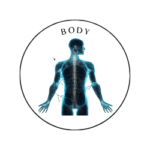 Mind
Mind
- Digital and Modern Well-being
- Mental Health and Emotional Well-being
- Mind-Body Connection and Holistic Health
- Parenting and Family
- Personal Growth and Development
- Relationships and Social Well-being
- Stress and Relaxation
- Therapeutic and Creative Practices
- Trauma and Recovery
- Work, Productivity, and Discipline
 Body
Body
 Fitness
Fitness
 Food
Food
 Beauty
Beauty
Heart Rate Zones Explained

Heart Rate Zones Explained: What’s Right for You?
Understanding heart rate zones can help you optimize your workouts, enhance performance, and achieve specific fitness goals. Heart rate zones are different intensity levels based on your maximum heart rate, each with unique benefits and suitable types of exercise. This guide will help you understand the five main heart rate zones and how to determine the best zone for your fitness goals.
What Are Heart Rate Zones?
Heart rate zones are ranges of beats per minute (BPM) that reflect the intensity of your exercise. These zones are calculated as percentages of your maximum heart rate (MHR). Each zone targets different energy systems in the body, providing distinct benefits like fat burning, aerobic endurance, or anaerobic power.
How to Calculate Your Maximum Heart Rate (MHR)
The most commonly used formula to estimate your maximum heart rate is:
MHR=220−your age\text{MHR} = 220 – \text{your age}MHR=220−your age
For example, if you are 30 years old:
MHR=220−30=190 BPM\text{MHR} = 220 – 30 = 190 \text{ BPM}MHR=220−30=190 BPM
While this formula is a general guideline, individual factors like genetics, fitness level, and gender can cause variations. For a more accurate measurement, consider a supervised maximum heart rate test or a heart rate monitor that offers personalized assessments.
The Five Heart Rate Zones
Each heart rate zone corresponds to a specific intensity level and percentage of your MHR. Here’s a breakdown of each zone, along with its benefits and suggested activities.
Zone 1: Warm-Up Zone (50-60% of MHR)
- Intensity: Very light
- BPM Range (for a 30-year-old with an MHR of 190): 95–114 BPM
- Description: This is a gentle, low-intensity zone perfect for warming up, cooling down, or active recovery.
- Benefits: Helps improve circulation, loosen muscles, and prepare the body for higher intensity without straining the cardiovascular system.
- Best For: Warm-ups, cool-downs, recovery days, and beginners starting a fitness journey.
Zone 2: Fat-Burning Zone (60-70% of MHR)
- Intensity: Light
- BPM Range: 114–133 BPM
- Description: Zone 2 is often referred to as the fat-burning zone because the body uses a higher percentage of fat as its energy source at this intensity.
- Benefits: Increases endurance and aerobic capacity while improving the body’s efficiency in using fat as fuel.
- Best For: Steady-state cardio like brisk walking, easy cycling, light jogging, or longer, low-intensity workouts.
Zone 3: Aerobic Zone (70-80% of MHR)
- Intensity: Moderate
- BPM Range: 133–152 BPM
- Description: The aerobic zone is where cardiovascular fitness improves significantly. It’s the ideal zone for building endurance and stamina.
- Benefits: Strengthens the heart and lungs, improves aerobic capacity, and boosts overall cardiovascular health. In this zone, the body burns both carbohydrates and fats.
- Best For: Moderate-intensity cardio such as running, swimming, or cycling at a steady pace, and extended cardio sessions for endurance training.
Zone 4: Anaerobic Zone (80-90% of MHR)
- Intensity: High
- BPM Range: 152–171 BPM
- Description: The anaerobic zone involves high-intensity exercise that improves speed, power, and lactate threshold. The body relies more heavily on carbohydrates as the primary fuel source.
- Benefits: Increases anaerobic capacity, improves tolerance to high-intensity exercise, and enhances athletic performance. Training in this zone can improve speed and power.
- Best For: High-intensity interval training (HIIT), tempo runs, hill sprints, or any workout aiming to increase speed and performance.
Zone 5: Maximum Effort Zone (90-100% of MHR)
- Intensity: Maximum effort
- BPM Range: 171–190 BPM
- Description: The maximum effort zone is the highest intensity level and can only be sustained for short bursts. This zone is often reached in sprints or highly demanding exercises.
- Benefits: Increases maximum power output, speed, and muscular endurance. Training here improves the body’s ability to perform at peak levels for short periods.
- Best For: Advanced athletes aiming to push limits, short sprints, HIIT sessions, and sports that require bursts of maximal effort.
How to Find the Right Heart Rate Zone for Your Goals
Each heart rate zone has distinct benefits, so the best zone for you depends on your fitness goals.
For Fat Loss: Focus on Zone 2. Exercising in this zone helps the body use fat as fuel, making it ideal for longer, lower-intensity sessions. However, incorporating Zone 3 and Zone 4 workouts (like HIIT) can also aid fat loss by increasing calorie burn and metabolism.
For Endurance and Aerobic Fitness: Spend most of your time in Zone 3. Workouts in this zone improve cardiovascular endurance and aerobic capacity, which is ideal for endurance events like marathons or long-distance cycling.
For Improved Speed and Power: Use Zone 4 for interval training. Workouts in this zone increase anaerobic capacity, lactate threshold, and stamina, all of which are essential for sports or activities that require bursts of speed.
For Maximum Performance and Competitive Goals: Incorporate Zone 5 in short, controlled intervals. This zone pushes your body to the limit, enhancing power and performance. Since this is highly intense, only advanced or competitive athletes should spend time here, and even then, sparingly.
For General Health and Fitness: Balance Zones 2 and 3. These zones are sustainable and offer health benefits without overtraining or excessive fatigue. Zone 2 improves fat metabolism, while Zone 3 strengthens the heart and lungs.
How to Track Your Heart Rate Zones
Using technology can help you stay in the correct heart rate zone for your goals.
- Heart Rate Monitor: Wearable heart rate monitors (like chest straps or wrist-based monitors) are convenient and accurate ways to track your heart rate.
- Fitness Watches: Many smartwatches come with heart rate tracking and will notify you when you’re in specific zones.
- Manual Tracking: You can also measure your pulse manually for 15 seconds and multiply by four to estimate your BPM, though it’s less practical during workouts.
Tips for Training in Heart Rate Zones
- Warm-Up and Cool-Down: Start every workout with a warm-up in Zone 1 and cool down after higher-intensity workouts to help the body recover.
- Progress Gradually: Avoid jumping straight into high zones. Start with Zones 1 and 2 to build a fitness foundation, then progress to higher zones as your endurance and strength improve.
- Vary Your Workouts: Incorporate a mix of workouts across different heart rate zones for balanced cardiovascular and muscular benefits. This variety helps prevent overuse injuries and keeps workouts engaging.
- Listen to Your Body: Heart rate is a good guide, but pay attention to how you feel. Some days, you may need a lighter workout in Zone 2, while other days, you might feel ready to tackle a high-intensity session.
Sample Weekly Plan Using Heart Rate Zones
Here’s an example of how you might structure a week using various heart rate zones.
- Day 1: Zone 2 (45-minute brisk walk or light jog)
- Day 2: Zone 3 (30-minute moderate-paced run or swim)
- Day 3: Zone 1 (Active recovery: gentle stretching or walking)
- Day 4: Zone 4 (HIIT: 20-minute interval workout)
- Day 5: Zone 2 (45-minute bike ride)
- Day 6: Zone 3 (Endurance run, 45–60 minutes)
- Day 7: Rest
Conclusion
Understanding heart rate zones can help you train more effectively and reach your fitness goals more efficiently. Each zone has unique benefits, and finding the right mix for your goals can improve endurance, burn fat, or boost athletic performance. Start by identifying your maximum heart rate, choose the right zones based on your goals, and track your progress to ensure you’re maximizing your time and effort.
